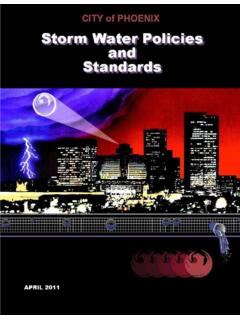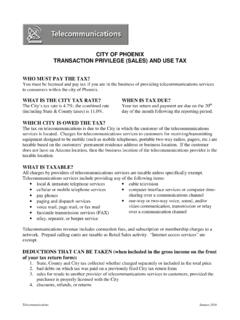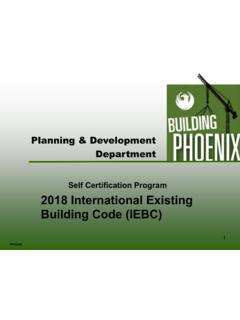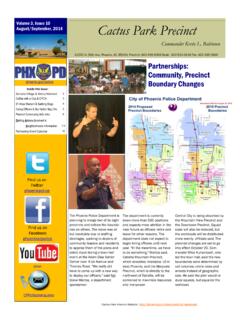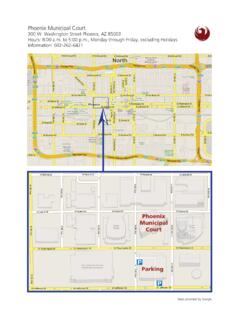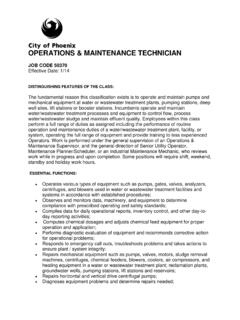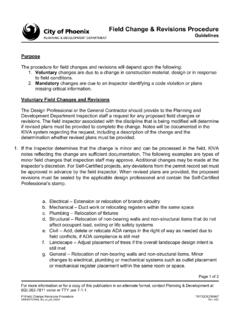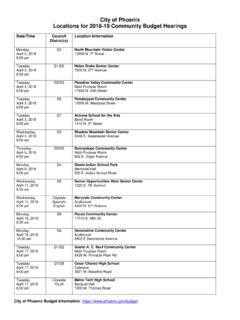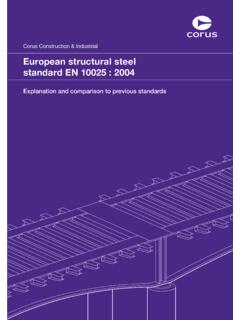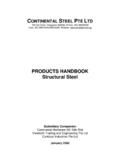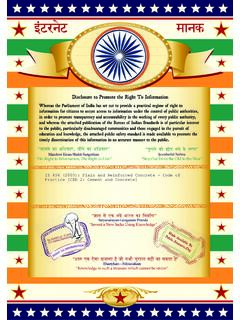Transcription of STRUCTURAL COLLAPSE RESCUE OPERATIONS
1 PHOENIX REGIONAL STANDARD OPERATING PROCEDURES STRUCTURAL COLLAPSE RESCUE OPERATIONS 07/11-R PAGE 1 of 7 SCOPE This procedure establishes a standard structure and guideline for all fire department personnel operating at incidents involving STRUCTURAL COLLAPSE RESCUE OPERATIONS . The procedure outlines responsibilities for first-responders, TRT units, Command Officers, and other fire department personnel responding to such incidents. All other Phoenix Fire Department procedures shall apply to STRUCTURAL COLLAPSE RESCUE OPERATIONS where applicable. PURPOSE The purpose of this procedure is to establish guidelines for the response of fire department personnel and equipment to STRUCTURAL COLLAPSE RESCUE incidents.
2 Because STRUCTURAL COLLAPSE RESCUE OPERATIONS present a significant danger to fire department personnel, the safe and effective management of these OPERATIONS require special considerations. This procedure identifies some of the critical issues which must be included in managing these incidents. TACTICAL CONSIDERATIONS Due to the inherent dangers associated with these OPERATIONS , the Phoenix Fire Department Risk Management Profile shall be applied to all STRUCTURAL COLLAPSE RESCUE OPERATIONS and shall be continuously re-assessed throughout the incident. A phased approach to STRUCTURAL COLLAPSE RESCUE OPERATIONS which include; Arrival, Pre- RESCUE OPERATIONS , RESCUE OPERATIONS , and Termination, can be utilized to safely and effectively mitigate these high-risk / low-frequency events.
3 Additional technical information is available in the issued Technical RESCUE Field OPERATIONS Guide. Phase I Arrival. During the Arrival phase of a STRUCTURAL COLLAPSE incident, Command must take strong control of the incident to prevent the situation from quickly deteriorating into a chaotic event. A STRUCTURAL COLLAPSE incident is likely to have unorganized, volunteer RESCUE efforts being conducted by civilian personnel which creates an unsafe situation for the volunteers as well as rescuers. Command must focus attention early on building a strong Command structure that will ensure the safety of RESCUE personnel and support this complex campaign operation. I. ESTABLISH COMMAND A. First arriving company officer shall assume Command and begin an immediate size-up of the situation.
4 B. First arriving TRT unit that is staffed with a TRT Company Officer should be assigned RESCUE Sector. The TRT Company Officer assigned as RESCUE Sector should remain with his crew. RESCUE Sector responsibilities include: Assuming technical RESCUE OPERATIONS control. Identifying hazards and critical factors. Developing a RESCUE plan and back-up plan. Communicating with and directing TRT resources assigned to RESCUE Sector. Informing Command of conditions, actions, and needs during all phases of the RESCUE operation. PHOENIX REGIONAL STANDARD OPERATING PROCEDURES STRUCTURAL COLLAPSE RESCUE OPERATIONS 07/11-R PAGE 2 of 7 C.
5 Designate a Safety Officer. Considerations for Safety Officer include: One of the Regional Special OPERATIONS qualified Safety Officers. A Special OPERATIONS qualified Battalion Chief and/or FIT. Any experienced TRT Company Officer assigned to the incident. D. Following the transfer of Command to a Command Officer, a Technical Advisor should be assigned to join the Command Team at their location to assist in managing personnel and resources engaged in the technical aspects of the incident. The Technical Advisor is responsible for ensuring that the RESCUE plan developed by RESCUE Sector and communicated to Command is a sound plan in terms of the safety and welfare of both victim(s) and rescuers.
6 Considerations for the Technical Advisor include: A Special OPERATIONS qualified Battalion Chief and/or FIT. One of the Regional Special OPERATIONS qualified Safety Officers. Any experienced TRT Company Officer assigned to the incident. The Technical Advisor position within the Command Team should be filled prior to the implementation of any RESCUE plan proposed by RESCUE Sector. II. Size-Up A. Spot apparatus outside of any potential secondary COLLAPSE zone. B. Secure a witness or responsible party to assist in gathering information to determine exactly what happened. If no witnesses are present, Command may have to look for clues on the scene to determine what happened. C. Assess the immediate and potential hazards to the rescuers.
7 Hazards associated with STRUCTURAL COLLAPSE include: Secondary COLLAPSE . Explosion and fire. Broken gas and water lines. Energized electrical lines. Falling debris. D. Isolate immediate hazard area, secure the scene, and deny entry for all non- RESCUE personnel. E. Assess on-scene capabilities and determine the need for additional resources. Consider establishing Level 2 staging and calling for heavy machinery and equipment such as cranes and front-end loaders. Phase II Pre- RESCUE OPERATIONS The Phoenix Fire Department is the sponsoring agency of AZ-TF1, which is one of 28 FEMA Urban Search & RESCUE task forces in the nation. This team is highly trained and equipped to respond to incidents involving STRUCTURAL COLLAPSE .
8 Consideration should be given to utilize the personnel and equipment from this task force for incidents involving STRUCTURAL COLLAPSE . PHOENIX REGIONAL STANDARD OPERATING PROCEDURES STRUCTURAL COLLAPSE RESCUE OPERATIONS 07/11-R PAGE 3 of 7 I. MAKE THE GENERAL AREA SAFE A. Establish a hazard zone perimeter around the COLLAPSE area. Keep all non-essential RESCUE personnel out of the hazard zone. Remove all non-essential civilian personnel at least 150 feet away from the hazard zone perimeter. II. MAKE THE RESCUE AREA SAFE A. Secure all hazards. If it is not possible to secure all hazards, RESCUE personnel operating in the area must be made aware of the hazard(s).
9 B. Establish a Lobby Sector. Command should establish a Lobby Sector to control the flow and maintain personnel accountability of RESCUE personnel in the COLLAPSE area. C. Establish a Treatment Sector. Command should establish a Treatment Sector to identify and set-up a triage and treatment area a safe distance from the COLLAPSE area for the treatment and transportation of victims. D. Establish a Building Triage team. RESCUE Sector should establish a Building Triage team which shall consist of a Technical RESCUE Technician trained and knowledgeable in STRUCTURAL COLLAPSE shoring techniques, a STRUCTURAL engineer, and a Hazardous Materials Technician. This team will asses the STRUCTURAL integrity and hazardous conditions of the building(s) involved and will utilize a building marking system to indicate their findings.
10 Consider establishing additional Building Triage teams if the area of COLLAPSE is widespread and involves numerous buildings. E. Establish a Search team. RESCUE Sector should establish a Search team to search the COLLAPSE area and locate victims. A Search team shall consist of TRT personnel trained in the use of specialized search equipment, and search canines with their handlers (if available). Consider establishing additional Search teams if the area of COLLAPSE is widespread and involves numerous buildings. F. Establish a RESCUE team. A RESCUE Team shall consist of TRT personnel trained in the use of specialized RESCUE equipment and techniques. Consider establishing additional RESCUE teams if the area of COLLAPSE is widespread and involves numerous buildings.
